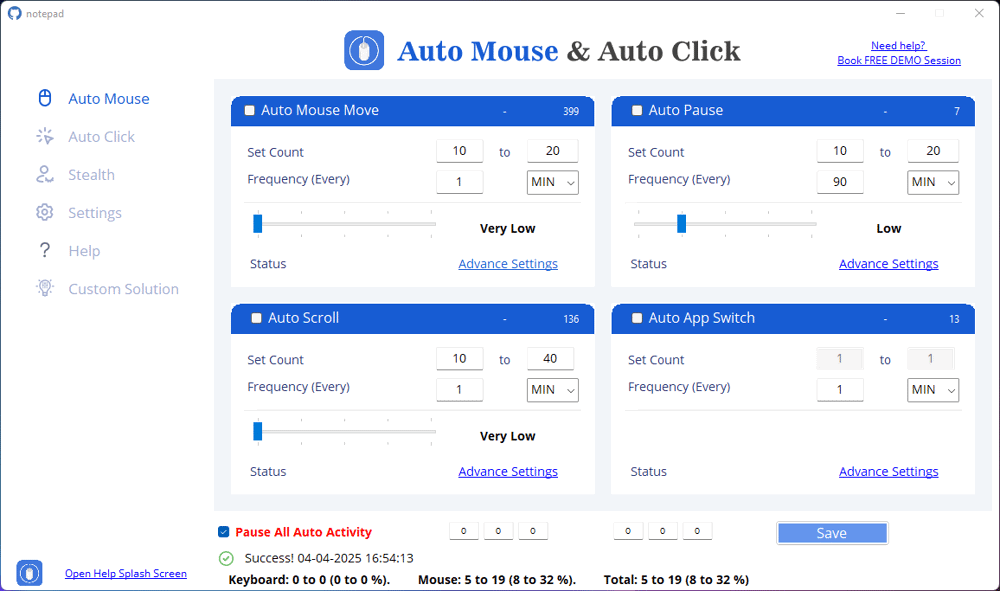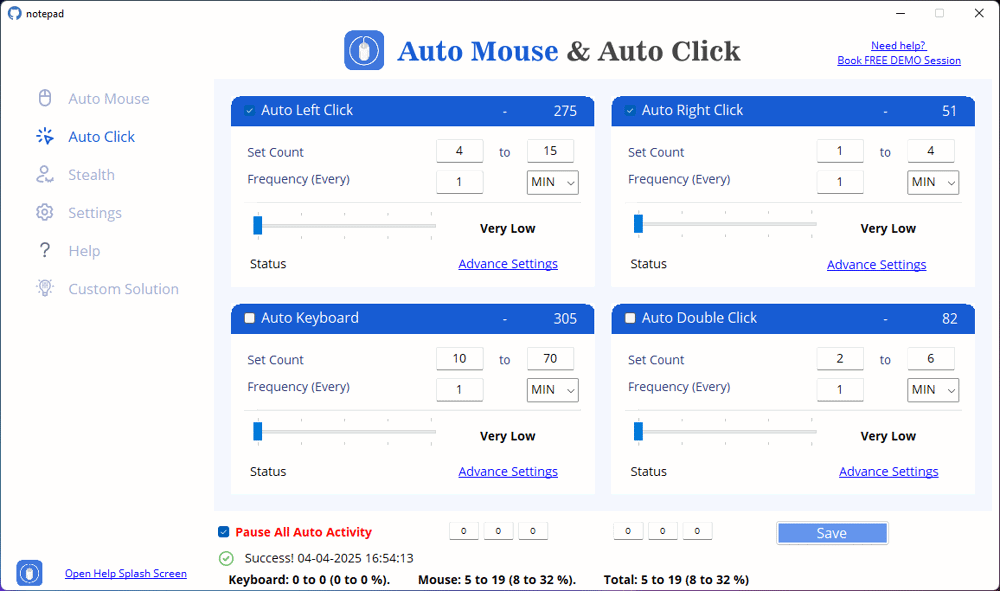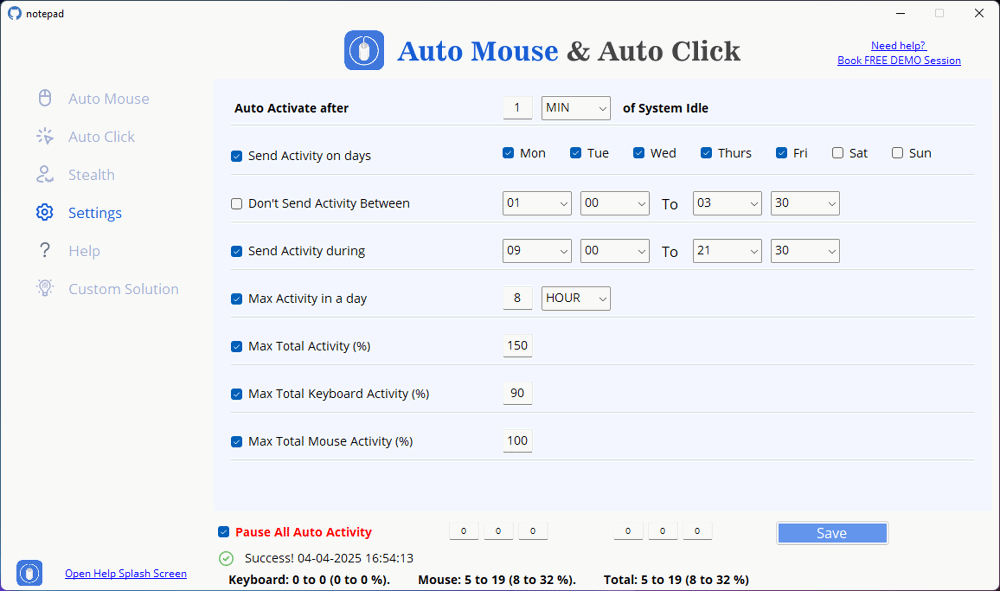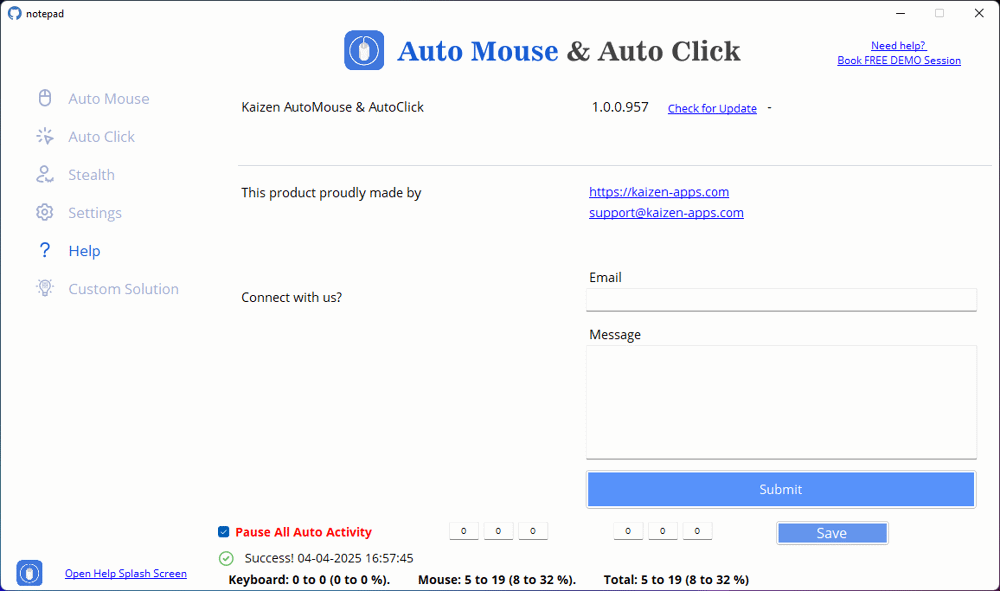
Ultimate Guide to DeskTime and How It Can Be Tricks (2025)
Introduction
Purpose of this page: To understand how it works, what its limits are, and how certain automated behaviors may bypass its logic.
🧭 What is DeskTime?
App and website usage.
Keyboard and mouse activity levels.
Idle time vs. productive time.
Auto screenshots for visual proof of work.
Productivity % scores based on time spent in “productive” apps.
It’s used for employee monitoring, optimizing performance, and verifying remote work engagement.
How It Tricks DeskTime
DeskTime Feature
AM&ACCapability
Bypass Explanation
Keyboard & Mouse Activity
Sends fake keystrokes and human-like mouse movement
continuously.
DeskTime detects input, assumes user is active even if they
are not.
Idle Time Detection
Your tool prevents long inactivity by triggering subtle input
patterns.
Prevents system from flagging idle time or auto-switching to
“away” status.
Productivity Score Calculation
App switching mimics real work — cycling through “productive”
apps regularly.
Increases the % of “productive time” in DeskTime’s report
artificially.
Screenshots of User Desktop
Combines random scrolling, app switching, and clicks during
capture windows.
Screenshots appear “active” and natural even if user is not
present.
Smart Categorization
AM&AC can be configured to switch between approved or
“productive” apps.
DeskTime logs app usage that appears work-related, masking
idle or fake work.
Activity Levels (Low–High)
Allows simulation of Low (10–30%), Medium (40–60%), or High (70–80%) input. Keeps activity within believable human thresholds to avoid suspicion.
Allows simulation of Low (10–30%), Medium (40–60%), or High (70–80%) input. Keeps activity within believable human thresholds to avoid suspicion.
Focus & Multitasking Behavior
Switches between apps at intervals to mimic deep work or
multitasking sessions.
Fools DeskTime’s focus metrics and improves productivity
profiles.








